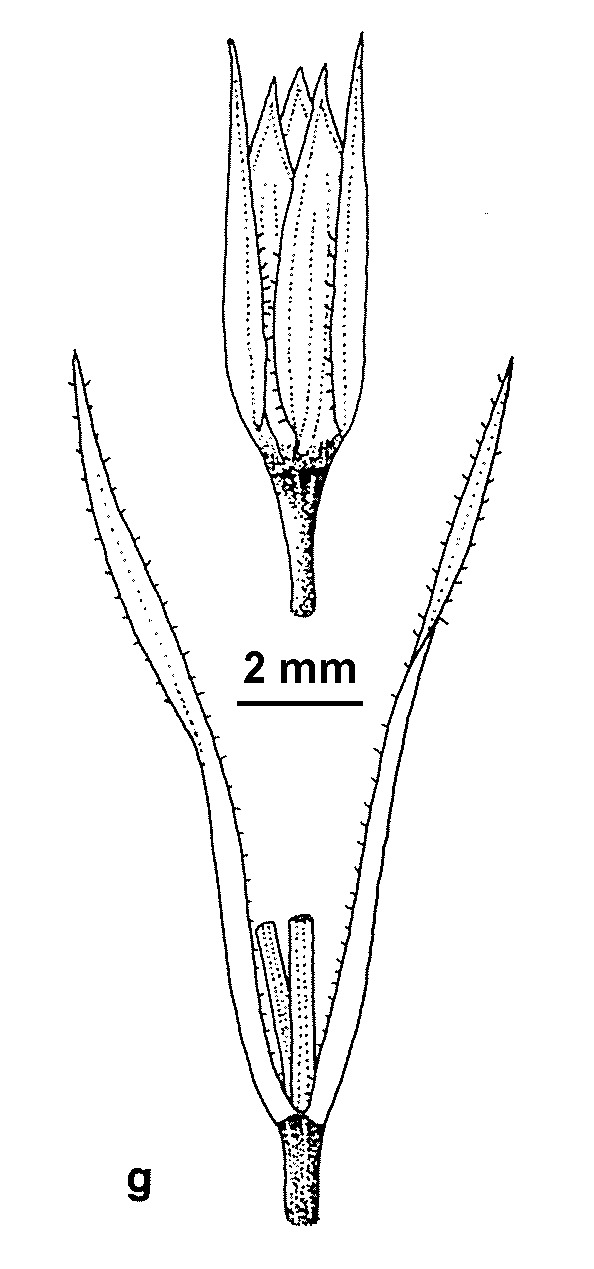Stellaria graminea
L. Lesser StitchwortSemi-perennial with slender creeping stock, glabrous; stems weak, ascending, diffuse, single-stemmed or branched from base, 20–100 cm long. Leaves sessile, narrowly ovate, lanceolate, 9–40 mm long, 2–5 mm wide, margin entire, toothed or ciliate to apex; inflorescence leaves ('bracts') ovate, margin ciliate to apex, usually scarious. Inflorescence usually a terminal dichasium; fruiting pedicel usually erect, (10–)20–50(–70) mm long; sepals 3–7 mm long, glabrous, apex acute, margin ciliate in at least 2 sepals; petals 5, c. equal in length to sepals; stamens 10, some may be sterile or reduced. Capsule 3–5 mm long, 2–3 mm diam., longer than or equal to sepals; valves straight; seeds 5–20, 0.5–1 mm long, mid- to reddish-brown, tubercles medium, narrow flattened ridges appearing reticulate. Flowers Nov.–Feb.
Also naturalised NSW, Tas. Native to Europe, Asia. Known in Victoria by a single (1946) collection from Cann River. In other States it is an uncommon weed occurring in alpine areas on edges of rivers and swamps.
The above description is based on non-Victorian specimens.
Miller, C.H.; West, J.G. (1996). Stellaria. In: Walsh, N.G.; Entwisle, T.J., Flora of Victoria Vol. 3, Dicotyledons Winteraceae to Myrtaceae, pp. 233–240. Inkata Press, Melbourne.
 Spinning
Spinning



